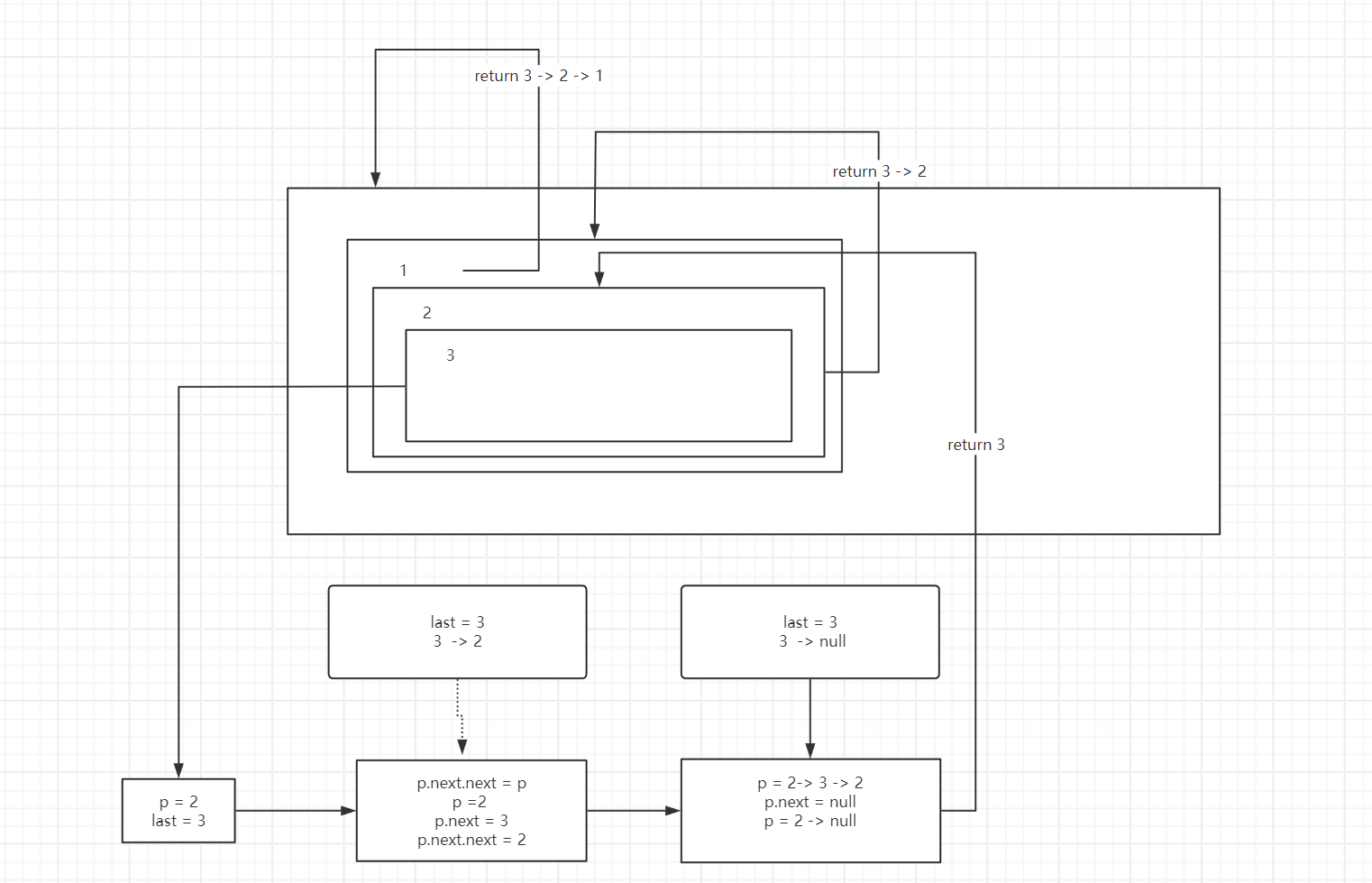# 链表
在计算机科学中,链表是数据元素的线性集合,其每个元素都指向下一个元素,元素存储上并不连续
# 分类
单向
双向
循环
# 使用的对象
public static class ListNode {
int val;
ListNode next;
ListNode() {
}
ListNode(int val) {
this.val = val;
}
ListNode(int val, ListNode next) {
this.val = val;
this.next = next;
}
public static ListNode of(int... val) {
ListNode res = new ListNode(-1, null);
ListNode p = res;
for (int i : val) {
while (p.next != null) {
p = p.next;
}
p.next = new ListNode(i, null);
}
return res.next;
}
@Override
public String toString() {
StringBuilder stringBuilder = new StringBuilder("[");
ListNode next = this;
while (next != null) {
stringBuilder.append(next.val).append(",");
next = next.next;
}
stringBuilder.delete(stringBuilder.length() - 1, stringBuilder.length());
stringBuilder.append("]");
return stringBuilder.toString();
}
}
# 单向链表
核心方法
- add
- addFirst
- removeFirst
- remove
重要的思想就是指针以及在操作的时候避免空指针
创建Node对象分别记录下一个地址和值
static 什么时候加
static 加和不加的时机在于,处理的值是否依赖于外部,如果依赖于外部那么就不能加static
public static class Node {
private int value;
private Node next;
public Node(int value, Node next) {
this.value = value;
this.next = next;
}
public Node(int value) {
this(value, null);
}
public int getValue() {
return value;
}
public Node getNext() {
return next;
}
}
add & addFirst
public void addFirst(int value) {
head = new Node(value, head);
}
public void addLast(int value) {
Node last = findLast();
if (last == null) {
addFirst(value);
return;
} else {
last.next = new Node(value);
}
}
remove
public boolean removeFirst() {
if (head == null) {
return false;
}
if (head.next == null) {
head = null;
return true;
}
head = head.next;
return true;
}
# 双向
在单向链表上增加了一个pre节点,核心操作新增和删除,就是将上一个节点赋值next 赋值到当前节点 当前节点的上一个节点,就是上一个节点
private Node head;
private Node tail;
public RoundLinkList() {
this.head = new Node(null, -1, null);
this.tail = new Node(null, -1, null);
head.next = tail;
tail.pre = head;
}
private Node findNode(int index) {
int i = -1;
for (Node p = head; p != tail; p = p.next, i++) {
if (index == i) {
return p;
}
}
return null;
}
public void add(int value) {
Node pre = tail.pre;
Node node = new Node(pre, value, tail);
pre.next = node;
tail.pre = node;
}
public void insert(int index, int value) {
Node node = findNode(index - 1);
if (node == null) {
throw new RuntimeException(index + "");
}
Node pre = node.next;
Node inserted = new Node(node, value, node.next);
node.next = inserted;
pre.pre = inserted;
}
public boolean remove(int index) {
Node node = findNode(index - 1);
if (node == null) {
throw new RuntimeException(index + "");
}
Node nextNext = node.next.next;
if (nextNext == tail) {
throw new RuntimeException(index + "");
}
node.next = nextNext;
nextNext.pre = node;
return true;
}
@Override
public Iterator<Node> iterator() {
return new Iterator() {
Node p = head;
@Override
public boolean hasNext() {
p = p.next;
return p != tail;
}
@Override
public Node next() {
return p;
}
};
}
class Node {
Node pre;
int value;
Node next;
public Node(Node pre, int value, Node next) {
this.pre = pre;
this.value = value;
this.next = next;
}
}
}
# 单向链表反转
# 方式一
每次新增内容往覆盖原有头部,让next指针指向原先头部,达到反转
public ListNode reverse(ListNode listNode) {
ListNode newHead = null;
while (listNode != null) {
newHead = new ListNode(listNode.val, newHead);
listNode = listNode.next;
}
return newHead;
}
# 方式二
跟方式一类似,区别在于将原先节点移除到新链表节点,完成后就是倒叙的,好处就是不会产生新的节点
- 提供一个容器类
public class List {
private ListNode head;
public List(ListNode head) {
this.head = head;
}
public void addFirst(ListNode listNode) {
listNode.next = head;
head = listNode;
}
public ListNode removeFirst() {
ListNode first = head;
if (first == null) {
return null;
}
head = head.next;
return first;
}
}
- 循环添加
public ListNode reverse(ListNode listNode) {
List l1 = new List(listNode);
List l2 = new List(null);
while (true) {
ListNode listNode1 = l1.removeFirst();
if (listNode1 == null) {
break;
}
l2.addFirst(listNode1);
}
return l2.head;
}
# 方法3
递归
public ListNode reverse(ListNode p) {
if (p == null || p.next == null) {
return p;
}
ListNode last = reverse(p.next);
p.next.next = p;
p.next = null;
return last;
}

# 方法4
设置三个指针
- O1:传入的链表
- 02:O1的下一个指针
- N1:N1永远不动,指向头节点
/**
* 每一次循环完的变化
* 2 1 3 4 5 6
* 3 2 1 4 5 6
* 4 3 2 1 5 6
* 5 4 3 2 1 6
* 6 5 4 3 2 1
*/
public ListNode reverse(ListNode o1) {
ListNode o2 = o1.next;
ListNode n1 = o1;
while (o2 != null) {
//将中间的指针断开,也就是o2的位置
o1.next = o1.next.next;
//将o2的位置改变到头部
o2.next = n1;
//n1还原到头部地址
n1 = o2;
//o2指向下一个
o2 = o1.next;
}
return n1;
}